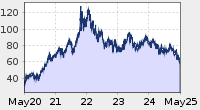Macroeconomical Facts - United Arab Emirates
Within these page, FML intends to show some brief economical basis date regarding economical situation for the United Arab Emirates. These data base is update from time to time.
FML collectes these data from relevant sources as mentioned.
Nevertheless - for any enterpreneural decission, we recommend our partners to investigate within own responsibility.
So far, our fact-sheet should give first indications.
|
Major macro economic indicators |
||||
|
|
2008* |
2009 |
2010(e) |
2011 (f) |
|
Economic growth (%) |
5.4 |
-2.0 |
2.1 |
3.1 |
|
Public sector balance (%GDP) |
20.5 |
0.4 |
8.5 |
9.0 |
|
Current account balance (%GDP) |
8.6 |
3.2 |
6.0 |
6.5 |
|
Foreign debt (%GDP) |
57.8 |
62.2 |
59.9 |
56.9 |
|
Foreign exchange reserves (in months of imports) |
1.7 |
2.6 |
2.4 |
2.8 |
Source: Coface 2011
The UAE is ranked at A2, although the rating had been on a negative watchlist since December 2008. However, according to the Coface ratings report, the probability of corporate defaults remains low.
"The slowdowns in construction and financial services is expected to continue in 2009 as a result of the credit crisis and decline in demand," says the report on the UAE rating.
Among its GCC neighbours, the UAE, along with Kuwait and Qatar, is ranked highest, followed by Bahrain and at A3 and Saudi Arabia at A4. The ratings concern the average level of risk presented by companies in their commercial transactions, and are unrelated to sovereign debt ratings.
Source: Coface / Gulf News, 27.04.2009









